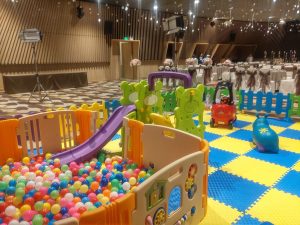In today’s housing landscape, visual presentation is a dealbreaker for attracting buyers.
This is where virtual staging software steps in.
Forget the backbreaking setup — just import your photo and stage away.
What Is Virtual Staging Software?
Virtual staging is the art of CGI to transform photos of empty properties.|It’s a way to help people picture themselves in a home without moving a single object.}
Here’s how it works:
- Provide a room image
- Pick a style
- Drop in virtual decor
- Download and share
Services such as Stuccco offer AI-enhanced options with realistic textures. Some provide automated results, while others let you DIY the setup.
Why It Works in 2024
If your listing doesn’t grab attention on Zillow, it won’t get a second chance.
Virtual staging allows listings to:
- Stand out visually
- Spark buyer imagination
- Close with less time on market
- Reduce marketing expenses
When inventory lags, properties with blank rooms don’t cut it. Staged ones? They attract traffic.
Features to Look For in Virtual Staging Tools
When choosing virtual staging software, consider:
- Design variety: Modern, rustic, or chic — more choices mean better results.
- Lifelike quality: No one wants cartoonish furniture.
- Simple workflow: You shouldn’t need a PhD in Photoshop.
- Cost structure: Look for pay-per-image that fit your needs.
- Drag-and-drop systems: Some tools even allow lighting tweaks.
Who Uses Virtual Staging?
Real estate professionals use it for:
- MLS listings
- Teasers for social media
- Rental property showcases
- Pre-construction ads
Pros and Cons
✅ Pros:
- Lower-cost alternative to physical staging
- 24-hour delivery possible
- High visual impact
- No logistics
❌ Cons:
- Only exists in photos
- Must label as virtual
- Quality varies by software
Disclosure Rules & MLS Guidelines
Honesty is key. MLS boards and associations often require:
- Watermarks like “Virtually Staged”
- Text disclosure in photo captions
- Clear communication with buyers that furniture is not included
Trying to trick buyers can backfire.
Future of Virtual Staging
The tech is evolving fast. Expect:
- One-click room styling
- 360° virtual rooms
- AR and VR integration
We’re heading toward hands-free, AI-driven property staging.
Top 5 Virtual Staging Software Picks
| Software Best For Price | ||
| BoxBrownie | Photo realism | $24/image |
| VisualStager | DIY, drag-and-drop | $15/photo |
| ApplyDesign | Quick auto-staging | $7–$29/photo |
| RoOomy | VR/AR staging | Contact sales |
| Stuccco | Custom pro staging | $29+/image |
Pro Tips for Realistic Results
- Shoot photos in daylight
- Shoot at eye level
- Less is more
- Create warmth
- Don’t mix styles wildly
Closing Thoughts
Virtual staging has changed the real estate game.
For anyone listing a vacant property, this is your secret weapon.
Modern buyers want visuals — so give them something beautiful.
Source: Hashnode.Dev (Great Virtual Staging Software)
Many firms have adopted AI with great success.
{For instance, a leading real estate agency in Tokyo used AI-powered chatbots to improve customer service 24/7, resulting in a 20% increase in conversions.
Another success story is from a mid-sized agency that leveraged predictive analytics to forecast market trends.
These examples demonstrate that when properly implemented, AI not only drives success but also offers a strategic advantage.
## Future Trends in AI for Real Estate
The future of real estate is dependent on to further advancements in AI.
Future developments include more refined predictive models and fully automated sales processes.
One emerging trend is the merging of AI with immersive technologies, which offers interactive, lifelike property tours.
This synergy offers a promising avenue for secure digital sales.
Moreover, as AI becomes more intuitive, real estate firms can expect even greater automation and smarter decision-making.
For agents and sellers, embracing AI now ensures long-term growth.
## Conclusion: Embracing the AI Revolution
Artificial intelligence is not just enhancing the real estate selling industry — it is completely overhauling it from the ground up.
Agents, sellers, and investors integrating these technologies will find themselves with a significant competitive advantage.
Although there are concerns and initial challenges, the advantages are compelling and inevitable.
In a world where speed, accuracy, and customer experience are paramount, AI is the catalyst for transformation in real estate selling.
The message is clear: adapt or get left behind.
As AI continues to evolve, its influence on real estate selling will redefine every aspect of the industry.
For those ready to transform their business, the time to act is now.
{In conclusion, AI software is not merely a tool — it is the engine of the future of real estate selling. Embrace the change, harness the power, and watch as your business transforms beyond measure.
Start exploring AI-driven solutions, invest in smart systems, and see how they streamline your business.

